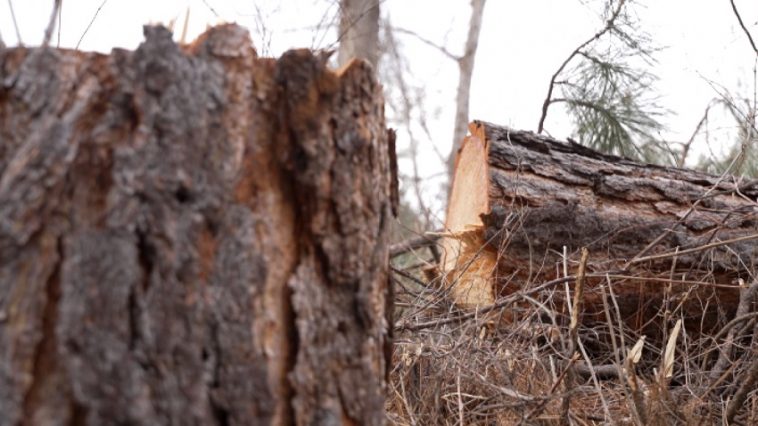MISSOULA, MT — Local hikers in Missoula were recently taken aback by the sight of several mature ponderosa pine trees being removed along the Maclay Flats trail. The trees, which are considered Montana’s state tree, had been a staple of the landscape, lining an irrigation ditch that runs through the area. However, their removal has left residents concerned, especially given that many were unaware of the decision until after the trees had been cut down.
Libby Langston, a frequent hiker on the trail, expressed her shock at the loss. “I came along here the other day and was absolutely flabbergasted,” Langston said. “All these ponderosa pines, the Montana state tree, were cut down, and they were perfectly healthy trees.”
According to officials from the Lolo National Forest, the removal was necessary due to damage caused by a windstorm that struck the area last year. The trees along the irrigation line were deemed a hazard because they could block the canal, potentially leading to debris buildup that might disrupt the irrigation system during the operational season, which begins in May and ends in early October. The Big Flat Irrigation District, which oversees the maintenance of the ditch, explained that the removal was part of scheduled maintenance to prevent future issues.
While the decision to remove the trees was made with the intention of maintaining the safety and functionality of the irrigation system, residents like Langston were left frustrated by the lack of communication surrounding the project. “There was no communication with the public to talk about it at all,” Langston said. “I know that a lot of people are upset about it just as I am.”
The Big Flat Irrigation District is authorized by the Bureau of Reclamation to maintain a 55-foot right of way from the centerline of the irrigation ditch to preserve water rights and infrastructure. The district’s goal is to ensure that the canal remains clear and operational, especially considering the number of trees that were knocked over by last year’s storm.
Despite the necessity of the maintenance, the public reaction has highlighted a broader issue regarding transparency in decision-making, especially when it comes to environmental changes in public spaces. The Lolo National Forest has expressed its commitment to improving the trail’s appearance, ensuring that the area remains a safe and enjoyable place for the community.
As the controversy continues, residents are calling for better communication and more community involvement in future decisions regarding the management of the trail and surrounding areas. The removal of the trees may have been a practical measure, but it has sparked an important conversation about balancing infrastructure needs with the preservation of local natural resources.



